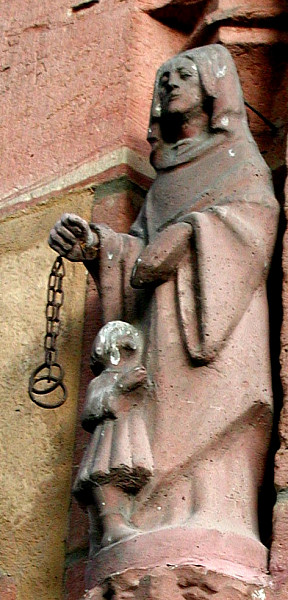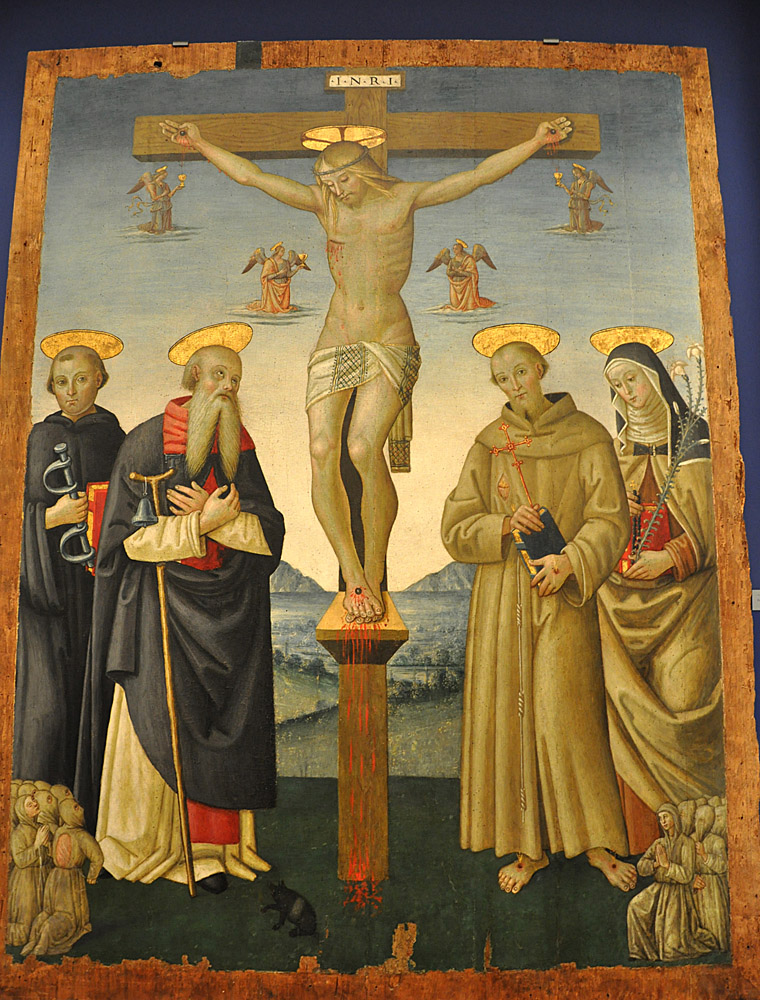The Golden Legend tells of several miracles in which prisoners were set free by the intercession of St. Leonard. Some gained their freedom even while Leonard was still alive, just by invoking his name.
Portraits sometimes show the saint with not only his attribute but one or more prisoners praying to him (as in the first image at right) or being led out of prison by him.
St. Leonard was a monk of the 5th century, so he is normally portrayed in a monastic habit, as in both images at right. One exception is this 15th-century fresco by Vincent de Kastav.
As for narrative images, a pair of stained-glass windows in Regensburg presents fourteen vignettes from St. Leonard's life.
Prepared in 2014 by Richard Stracke, Emeritus Professor of English, Augusta University. Revised 2016-12-23, 2018-06-02.

A prisoner praying to St. Leonard, Frankfurt am Main (See the description page.)

Among other saints in a 16th-century Crucifixion (See the description page.)
MORE IMAGES
- First half of the 12th century: "St. Leonard's Cupola" is at the south end of the crossing at St. Mark's, Venice, with mosaic portraits of St. Leonard, St. Nicholas, St. Clement, and one other.
- Circa 1460: A manuscript illumination puts an image of St. Leonard rescuing a prisoner inside a frame with symbols related to the theology of prayer.
- 1515-17: In Correggio's Saints Peter, Martha, Mary Magdalene, and Leonard
- Undated: A statue of St. Leonard atop an altarpiece.
IMAGES IN PUBLICATIONS
- First half of 15th century: Reliquary bust of St. Leonard includes his cowl and the top of his habit. Face lined to express aging. Skullcap. Silver repoussé from a Zadar goldsmith. In the treasury at Zadar Cathedral. In Petricioli, 22.
DATES
- Feast day: November 6
- "Lived about the year 500" according to the Golden Legend.
- No lives of St. Leonard were written before the 11th century, nor any other mentions.
NAMES
- Called "St. Leonard of Noblac" to distinguish him from another St. Leonard.
BIOGRAPHY
- Golden Legend #155: html or pdf
- Arbellot, Vie de Saint Léonard
- Vita Leonardi Confessoris Nobiliacensis, MHG: Scriptores Rerum Merovingicarum, III, 394-99.